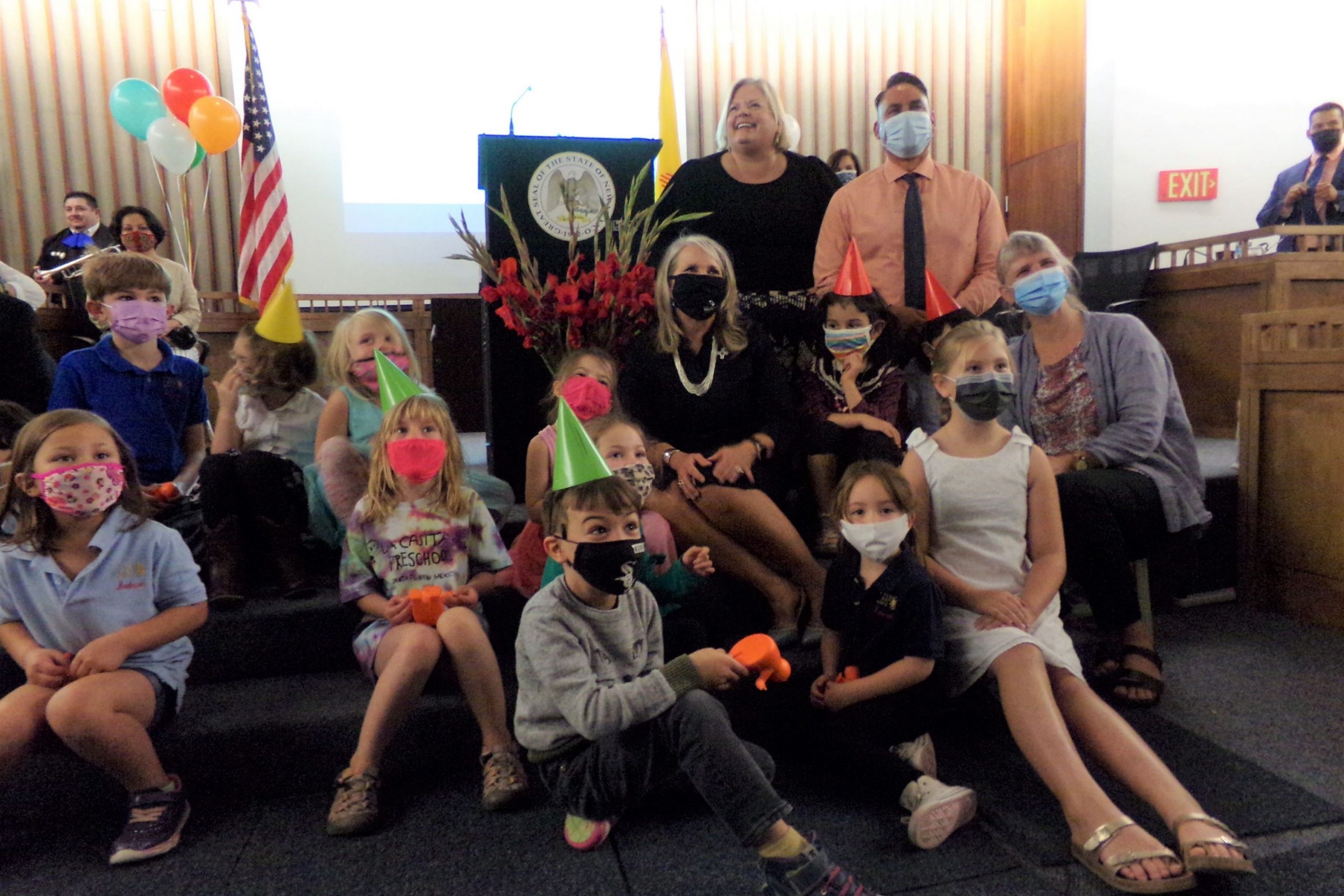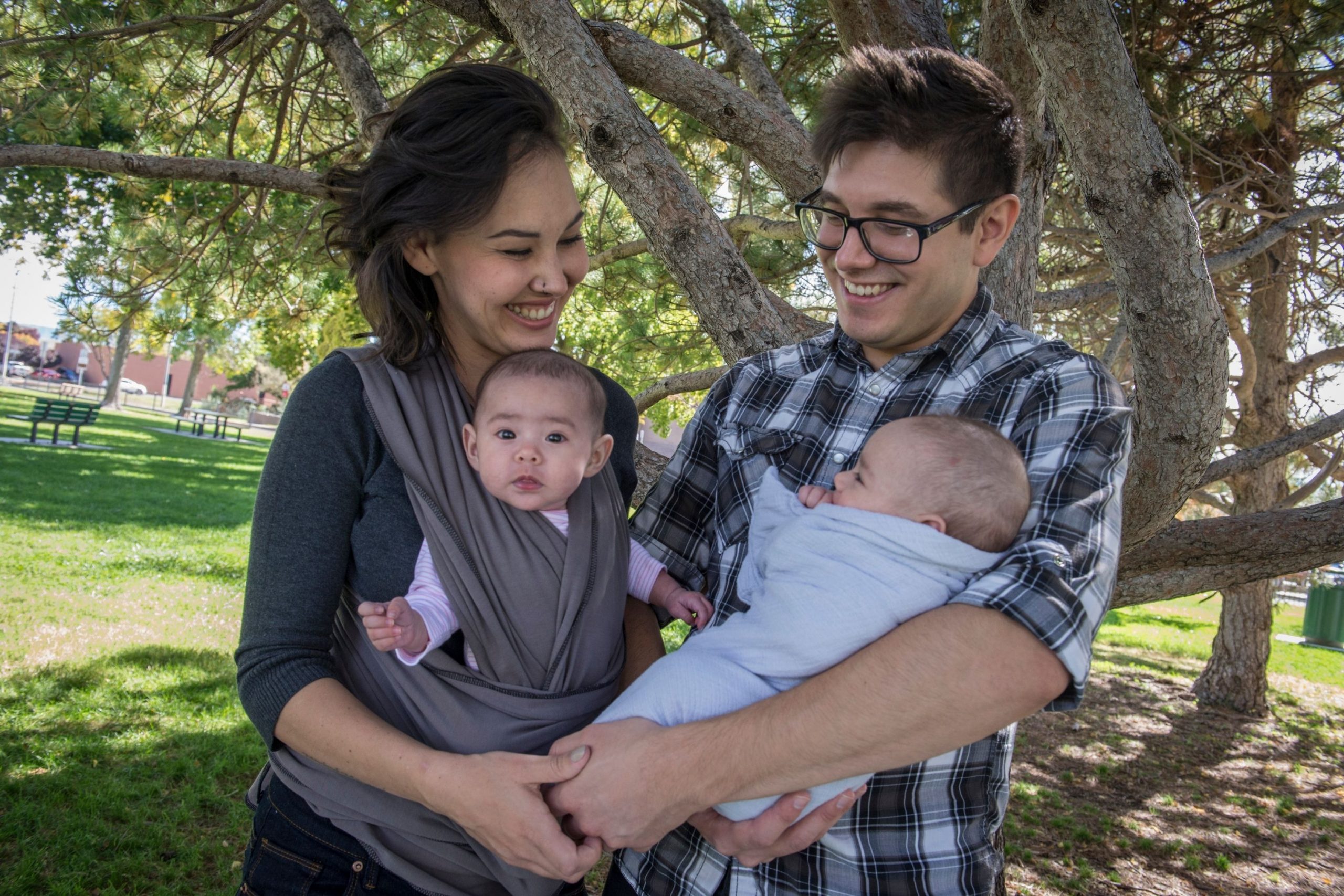Closing the Gap
How New Mexico is supporting better, more affordable child care
It’s a story all too familiar for many parents. When it’s time to go back to work, finding child care can prove an almost insurmountable challenge. Many child care centers don’t serve infants and toddlers, wait lists for admission can stretch on for months or even years, and some areas are “child care deserts” with hardly any options at all. Even when child care is readily available, the high costs of tuition can hurt some families financially and put it completely out of reach for others.
I remember all too well the struggles of finding care when our daughter, Beatriz, was born three years ago. I was fortunate enough to have three months of parental leave, and my wife cobbled together enough vacation and sick leave to stay home for most of that time as well. But as we came closer to our leave running out, we became increasingly anxious about finding care for our infant daughter. We wanted to find a place close to my wife’s work so she could visit on her breaks to breastfeed; we needed a place that accepted infants; and we needed a place that wasn’t completely full and was accepting new children. Both my wife and I earned modest salaries at our nonprofit jobs, so the cost of care was an important consideration as well.
Our options were slim. Running out of time, we ended up settling on the closest and most affordable option. The facilities weren’t as nice as would have liked, with the children all together in one big noisy space. The different age groups were separated only by waist-high dividers, and the monthly tuition was still comparable to our mortgage payment. The quality was low, the costs were high, and — although the staff was lovely and caring — there was regular turnover as educators left for higher-paying jobs. About a year after we enrolled, the center went out of business and shut its doors forever.


Those issues are all symptoms of a child care system that is fundamentally broken. The cost of providing high-quality early childhood education and care is simply greater than what most families can afford to pay out-of-pocket. Most child care providers are forced to operate on razor-thin margins, paying low wages and deferring improvements to their facilities, programs and classrooms to keep tuition low enough that parents can afford it. In some communities, especially in rural and lower-income areas, the gap between the costs of care and what parents can afford is so great that they become child care deserts.
These problems aren’t unique to New Mexico — communities across the nation are struggling with these issues. New Mexico is unique, however, in how we are tackling the problem. In 2019, Gov. Michelle Lujan Grisham made good on a longstanding promise to create a Cabinet-level department dedicated to early education and care. In July 2020, the New Mexico Early Childhood Education and Care Department (ECECD) officially launched, making our state one of the first in the nation to consolidate all early childhood programs and services in one agency. These investments are already paying off for New Mexico’s children and families.
Last month, Grisham and ECECD announced the single-largest expansion of child care assistance in state history. Previously, families could only qualify to receive child care assistance from the state if their annual income was at or below 200% of the Federal Poverty Level (FPL), which for a family of four is about $53,000 a year. That means if that same family of four earned $55,000 a year — just slightly above the median family income for New Mexico — they wouldn’t qualify for help. If you assume their child care costs are around $2,000 per month for their two kids, nearly half of that family’s pre-tax income would be spent on child care alone. A huge portion of our state’s families are stuck in a position where they don’t qualify for assistance but can’t afford private-pay tuition.

To provide these families some relief, the New Mexico Early Childhood Education and Care Department has allocated a portion of the agency’s emergency coronavirus relief funds provided through the American Rescue Plan Act to expand income eligibility for child care assistance in New Mexico up to 350% FPL, or $92,750 per year for that same family of four. This expansion will be transformational for many newly qualified families. Parents who might otherwise be forced to drop out of the workforce due to the cost of child care will be able to continue their careers. Middle-class families who might have otherwise had a huge portion of their income eaten up by child care can now set some money aside for a down payment on a house, college savings or an emergency fund.
In tandem with the eligibility expansion, ECECD has made another groundbreaking change by adopting a cost-estimation model to set the child care subsidy rates that our agency pays out to child care providers on behalf of families receiving assistance. This model is specifically calibrated to set rates based on the true costs of providing high-quality early education and care in our state, rather than relying on the artificially low market rate pegged to what parents can locally afford. Following the District of Columbia, New Mexico is the first state in the country to use this process to set its rates.
This may sound complicated, but the bottom line is that we have used this sophisticated new model to raise the subsidy rates here in New Mexico across the board — for every provider, in every setting, at every quality level. Making quality care affordable through increased subsidies to providers will mean that they will better be able to staff their classrooms with diverse, credentialed and well-compensated early childhood professionals. It means supporting programs that honor and incorporate students’ diverse cultural and linguistic backgrounds. It means creating learning environments that promote the physical, social, emotional, linguistic and intellectual growth of young children during their most important developmental years.
For parents and caregivers of young children these changes will mean more choices and improved access to high-quality, affordable child care as providers are incentivized to expand their capacity and open new businesses. It means fewer child care deserts and greater equity as child care businesses open to serve lower-income areas with the widest affordability gap for care. It means that parents who have been sidelined by the pandemic will have improved access to the support they need to get back to work.


For the business community, these changes will mean that the costs of child care are less likely to price parents out of the workforce; consumers will have more discretionary income as child care costs go down; widespread availability of quality early childhood education will make New Mexico more attractive for companies looking to expand or relocate; and our state’s talent pool will continue to improve as our early childhood education system serves as a launching pad for a rising generation of New Mexicans.
Today, this administration is closing gaps, reforming broken systems and finding a balance that has eluded our early childhood education system for so long. We still have much work to do, but right-sizing our child care assistance program for parents and providers is an important landmark on our journey towards creating a true cradle-to-career education system that helps all New Mexicans thrive.
To find out if your family qualifies under New Mexico’s expanded child care assistance program, take a brief survey at www.eligibility.ececd.state.nm.us or call (800) 832-1321 to speak with a representative from our call center. For help accessing home-visiting or early-intervention services, or for help finding a child care center, home-based provider or preK near you, call our resource and referral line at (800) 691-9067 or email support@newmexicokids.org.
Micah McCoy is the communications director for the New Mexico Early Childhood Education & Care Department.


